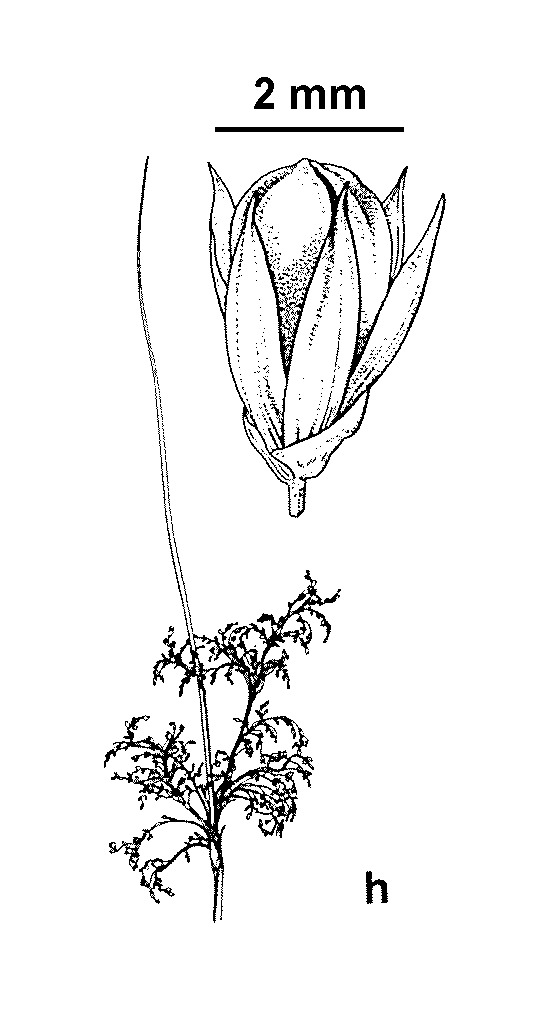Juncus aridicola
L.A.S.Johnson Tussock RushTufted perennial with horizontal or ascending rhizomes. Cataphylls tight or loose, pale brown throughout or pinkish-brown to medium brown at very base, usually long drawn-out, to c. 30 cm long. Culms erect, dull green, greyish-green or glaucous, 50–120 cm high and 1.3–4.0(–6.0) mm diam.; striations 40–115, fine, crowded, not strongly raised; pith interrupted, air spaces of variable size; stomates superficial. Inflorescence open, usually large, flowers scattered (rarely clustered) along strongly flexuose branches, at least some branches curving downwards; primary bract continuous with culm, to c. 40 cm long; prophylls present. Tepals with a green or faintly reddish tinged midrib, membranous margins of inner tepals rather broad, 2.0–2.8 mm long; stamens 3–6, anthers 0.5–1.0 mm long. Capsules stramineous, with a golden-brown apex, shorter than, equal to, or longer than the tepals, 2.0–3.0 mm long. Flowers mostly May–Nov., seeds shed mostly Jul.–Jan.
MuM, Wim, VRiv, MSB, RobP, MuF, Gold, CVU, NIS, HNF. WA, NT, SA, Qld, NSW (native and naturalised). Occurs in areas of low rainfall, confined to sites that are subject to periodic inundation (e.g. margins of rivers, lagoons and dams, roadside ditches).
Resembles Juncus usitatus but differs in having duller culms with more numerous finer striations, larger tepals, anthers and capsules, and generally larger inflorescences with more arcuate branches and longer paler cataphylls. Hybrids with J. amabilis and J. subsecundus are known.
Albrecht, D.E. (1994). Juncus. In: Walsh, N.G.; Entwisle, T.J., Flora of Victoria Vol. 2, Ferns and Allied Plants, Conifers and Monocotyledons, pp. 197–233. Inkata Press, Melbourne.
 Spinning
Spinning


